So, you got that new pair of boots and they seem great, but then what? This question may seem arbitrary, or even asinine, but it definitely holds merit. There are a couple of details when it comes to the realm of boots, that I feel might be overlooked, or just isn’t a hot topic for discussion. I’m talking about boot laces and proper sock selection. In my mind, these are definite chinks in the armor that could decide whether you have a good experience with that new pair of boots, or a negative one.
This subject isn’t overly deep and may seem a little “common sense”, but I still feel that it’s likely just a small blip on most people’s radar. Let’s talk about boot laces first. Depending on the environment where you spend most of your time, your boot laces can take a royal beating that leads to them wearing out before you ever notice much wear on the boots themselves. This might not be an issue for some; with the amount of time spent busting brush, grinding out miles in dusty environments, soaking in the rain, or wading through shallow water being minimal. But this hasn’t been my experience. I’ve worn out bootlaces within the first month of breaking in the boots! And usually I pay enough attention to ward off having a bootlace break on me while in the field, but it has happened to me once before. Notice that I said ONCE! I’m often a slow learner and it takes me awhile to come around to things, but this particular experience led to some nasty blisters after having to hike around and “hunt” with one boot sporting a broken lace for a couple of days. After that I did my best to always have an extra pair of laces stored in my survival/first aid kit.
But what if you could almost forget about the worry of worn and broken laces? A year or so ago, I made a social media post crying about some broken bootlaces that led to a couple of sage backcountry veterans sending me messages. They both suggested that I try paracord. The lightbulb went on and I immediately measured out the length that I needed and set out to make my own replacement laces from paracord. That proved to be a pain in the rear. The very time consuming, and patience sucking issue lies in trying to form something resembling an aglet (the hard length at the end of your laces) that allows you to thread the laces through the boot’s eyelets. Majorly frustrating and a major pain in the butt! On a whim, I went to Amazon.com and searched “paracord boot laces”. I was pleasantly surprised to find quite a few variations to choose from! Not only were there laces that were made from paracord (and yes, they all have aglets!), but there were “survival” laces that contained fishing line and fire-starting fiber inside of tough-wearing paracord skin. There are also laces made with Kevlar, and Aramid fibers as well. I ended up choosing some “tactical grade” paracord laces from Ironlace, and some Kevlar laces from proTOUGH. They were tested from late Fall, through the winter this past year, spending most of their time being wet from rain, or snow. So far, they’ve held up beautifully and I look forward to seeing how long they will last.
Socks. Now this is an area of your gear system that must not be overlooked. It’s important to take the time to find socks that not only have the correct characteristics that will keep your feet comfortable, but also that work with your individual boot and insole combo. You simply cannot expect one sock to be a do-all fit for every boot, or scenario. I’ve used socks that I absolutely loved in one boot, but then they caused hot spots and discomfort when worn with a different pair of boots, with a different insole, or during different environmental conditions. Just like anything else; with socks you get what you pay for. And your new boots that you just shelled out hard earned cash for, might as well be cheap boots from WalMart if you insist on wearing crappy socks, or just not the right socks for your foot/boot/insole combo. Don’t be a knot head! I’ve come to be a fan of a medium-thin sock, comprised of a merino wool and synthetic blend. This seems to yield the perfect boot micro climate that allows your feet to remain reasonably dry while managing foot temperature. If your boots fit looser, you’d need to find a slightly thicker sock that doesn’t sweat your feet to the point of hot spots and blisters. Or just make sure that your boots are properly sized for your feet. Heck, some boots just aren’t compatible with your feet, and regardless of how much we want them to work, they just won’t. But that’s another subject for another time.
I mentioned the sock-to-boot fit relationship. A sock that’s properly fitted to your foot, as well as your boot is crucial. You don’t want your feet to be allowed to move around excessively inside your boots while hiking around. But you also need a little bit of breathing room. And you also don’t want extra sock material balling up and causing discomfort. As the temperature starts to drop, thicker socks may come into play and hopefully you recognize that as the season’s change, as well as our activity levels, our boots should change as well. Once there’s snow on the ground I’ll switch to a taller, and more seasonal appropriate boot. My choice in a late season boot usually will fit a touch looser than the boots that I wear from late Spring to mid Fall, hence my choice in socks often will change as well.
I’ve come to really appreciate the over-the-calf length socks that are made by First Lite. The two models that I have the most experience with, are the “Mountain Athlete” and “Triad”, but they also offer other configurations as well. They are comprised of merino wool, as well as synthetic materials, having just the right amount of loft and a proper foot-hugging fit. With them fitting over your calf, this promotes blood circulation that can help stave off muscle fatigue. This year I was sent some SG Ram Performance socks from Stone Glacier. They didn’t seem to jive with the hard plastic/rubber orthotic insoles that my chiropractor “prescribed” me, but I feel that they are a solid choice and found that they worked great with other insoles. One small detail that I appreciated, is that the Stone Glacier socks are specifically shaped to fit your right and left foot. They even have convenient “L” and “R” markings stitched in to help keep you from having to guess!
Interestingly enough, I’ve pulled some decent sock choices while shopping at Costco, of all places. They sell a merino sock made by Weatherproof that I buy whenever I see them in stock. They don’t last very long, but are very comfortable and seem to be adaptable throughout the year. Another sock that I found while at Costco, is a merino-synthetic sock made by Eddie Bauer. I don’t recall the actual model name (likely the Guide Pro), but anything made by Eddie Bauer is worth a look. I’ve used them throughout the year and have found them to be top notch. There is a myriad of other solid socks to choose from, and I’ve only mentioned a few here. The take away from this is that once you figure out the correct characteristics needed when looking at socks, keep your eyes open and feel free to test them all!
- The difference between an actual aglet on factory produced paracord laces, and the melted and formed “aglets” on the laces that Luke made (on right).
- Kevlar and Paracord replacement laces: the remedy for broken bootlace worry?
- There are many top notch socks to choose from, these are just a few that Luke has been using recently.



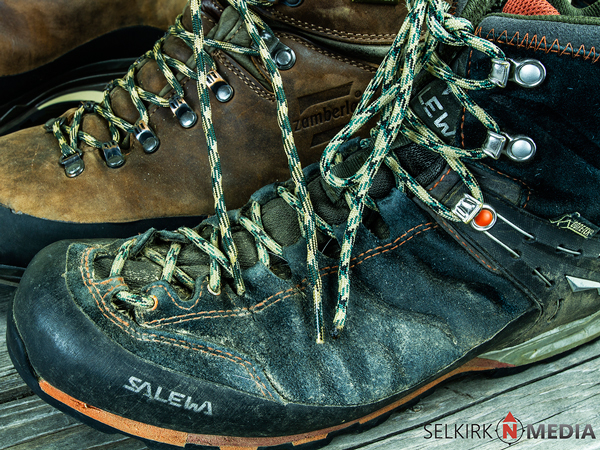
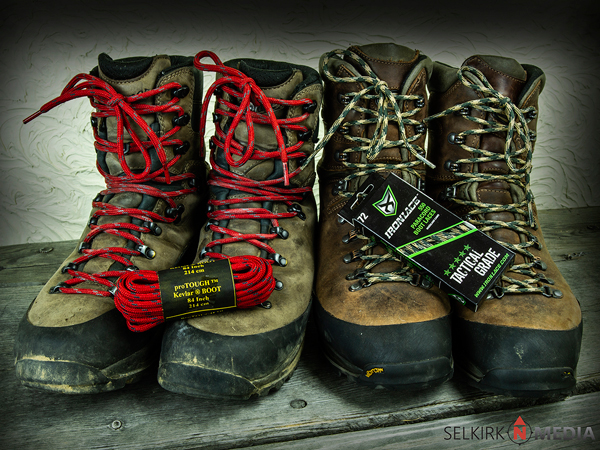
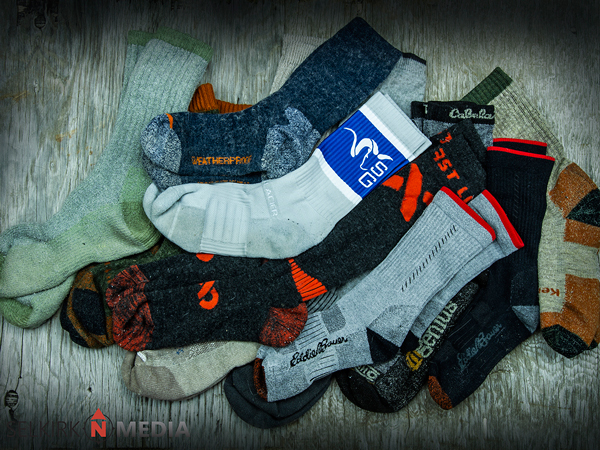
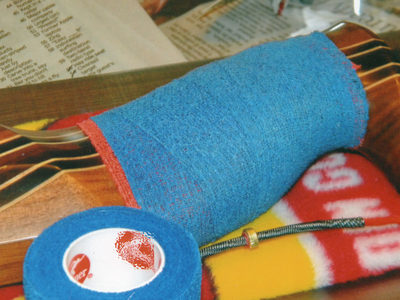
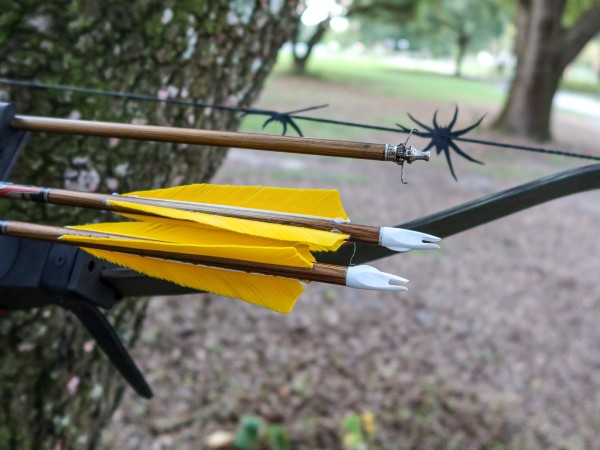


Leave A Comment